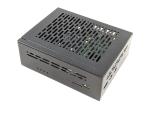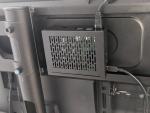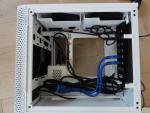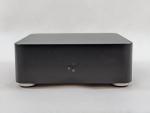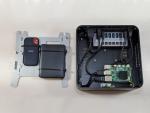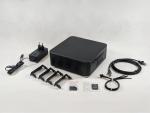Category
Description
Pi-NAS is an open-source alternative to commercial NAS or cloud for your home or small business. With low operational and purchase costs, it handles all basic functions just like its proven commercial competitors. All without commercial constraints, openly and securely, and on top of that, quietly. Easily upgradeable and expandable.
What is it good for?
Home data storage or NAS (Network Attached Storage) is valuable for shared storage of electronic content in a home or business. If you don't want to keep your personal documents like photos, videos, and work documents in the cloud, a NAS is the best option. NAS is connected to the local network, and designated folders are shared using protocols like SMB/CIFS, FTP, etc., within the local network. Every user and device, such as laptops, smartphones, or modern TVs, media centers (KODI), etc., can see these shared folders and read/write data according to permissions. It is possible to back up personal data to these folders, download and share multimedia, share them with other household members, etc. NAS primarily serves a protective function, meaning the disk is either mirrored to another physical disk (RAID), or better yet, regularly backed up to a backup disk (e.g., using the RSync service). Security and the required reading and writing speed play an important role here, which also influences the hardware costs.
Why open-source NAS?
Thanks to single-board computers like the Raspberry Pi and open-source projects such as Open Media Vault, it is much easier to "build" your own NAS according to your needs. From the Raspberry Pi 5 version and with the lower prices of SSD drives, an SSD NAS is now a perfect choice. More skilled "geeks" can assemble their own NAS and install the software fairly quickly based on our tutorial. However, if you don't have the experience or time, we have prepared a pre-assembled and pre-installed NAS for you. We can even equip it with pre-formatted drives in advance.

What will we need?
- Hardware - we can use any older PC or laptop. If you want low operating costs, the best choice is a miniPC with minimal power consumption. The most popular options are single-board computers like Raspberry Pi or Pine64.
- Software - we use the open-source platform Open Media Vault, which is based on the Debian Linux distribution.
Functionality
|
|
|
|
For more information about the features, visit the project's page at Open Media Vault.
Screenshots:
First version (2018)
Seceond version Pi-NAS (2019 - 2023)
Latest Pi-NAS SSD (2024 - ? ) Tutorial for DIY here. Preinstalled ready-to-use Pi-NAS in our eshop.